Sci-Non-Fi: 5 Fictional Killer Robots That Are Coming to Real Life
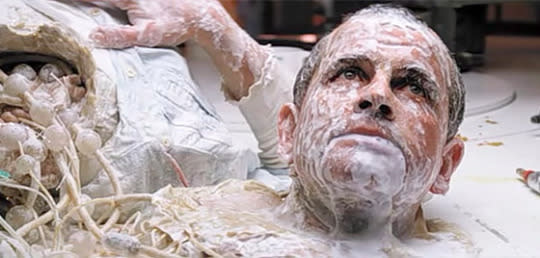
At the World Economic Forum in Switzerland last week, a panel of experts addressed the issue of killer robots — or lethal autonomous weapons systems (LAWS) — and it’s plenty scary if you want to dig in to it all. At least six countries, including the U.S., are actively developing this technology, which would enable robotic weapons to target and fire upon enemies without any human intervention.
It sounds like dystopian science fiction, except that it’s not, because the technology is about five minutes away. Actually, when confronted with prickly issues like this, I find it can be useful to turn to the annals of science fiction. Sci-fi stories can tell us what we’re worried about years before we actually have to deal with it.
Forthwith, my vote for the five scariest killer robots in sci-fi history, keeping in mind our current state of affairs. I’m leaving out the Terminator, because it’s a little too easy, and also I hate Arnold Schwarzenegger with the fire of a thousand suns.
Ash/Alien
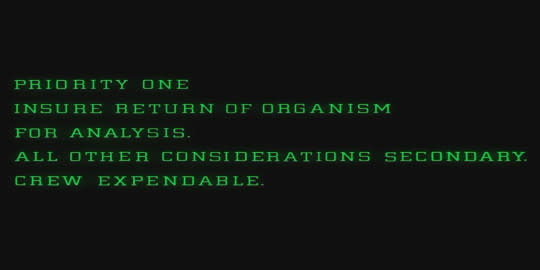
In the original Alien movie — still and forever the best of the franchise — android science officer Ash attempts to kill his human crewmates to protect some valuable bioweapon research. Two things make Ash particularly scary. First, there’s the severed head of British actor Ian Holm, lying in a pool of white android blood, conveying his sympathies for the human race.
But the really scary part is that Ash is simply following orders. His corporate masters have dictated his priorities and, as an artificial intelligence, Ash can’t distinguish between the value of the official directive and the value of human life. This is a central concern in the current debate around LAWS — visit the Campaign to Stop Killer Robots for more unsettling details.
Wintermute/Neuromancer
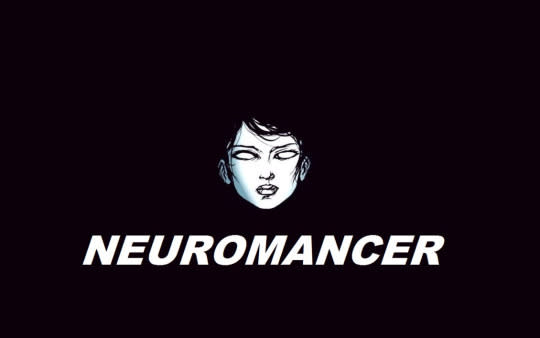
Science fiction author William Gibson pioneered an entire new genre — cyberpunk — with his 1984 novel Neuromancer, which features a split-personality artificial intelligence as villain. Wintermute, one of the entity’s two halves, is a fully sentient AI that, among other things, is able to take control of any machine in a networked system.
Gibson has a remarkable track record with prognostication, and his notions on AI are stirring some creepy echoes these days. The nascent Internet of Things (IoT) promises a future in which virtually all our machines — vehicles, appliances — will be networked. Security experts warn that such networks will be particularly vulnerable to hackers. Or perhaps rogue AI?
ED-209/Robocop
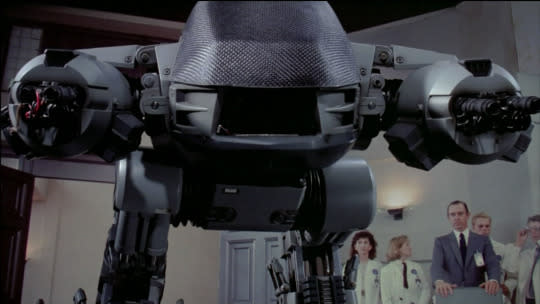
This hulking deathbot from director Paul Verhoeven’s dark satire is a metal embodiment of our worst killer robot fears. Heavily armed and prone to malfunction, the ED-209 “enforcement droid” glitches out during a targeting exercise and proceeds to mow down a junior executive in a hail of bullets. Nearly 30 years later, the scene is still terrifying.
It hits awfully close to home these days too. At the Switzerland conference, panelists pointed out that South Korea has automatic sentry guns along its border with North Korea that use cameras and heat sensors to target humans. Recent fiascos in AI image recognition don’t inspire confidence in targeting software either.
Mister Gutsy/Fallout
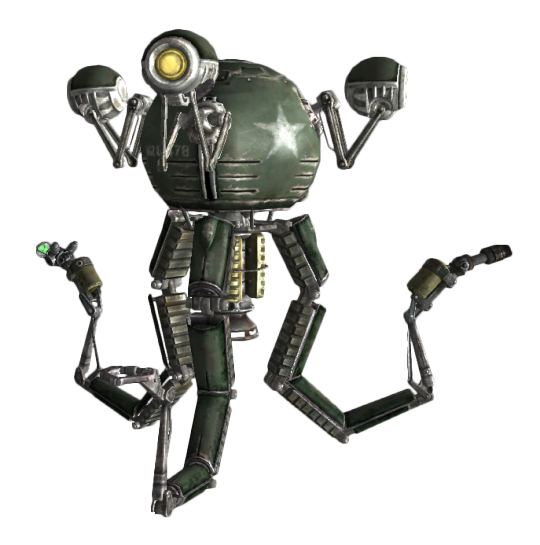
In recent years, some of the best science fiction concepts can be found in video games. The popular postapocalyptic franchise Fallout, for instance, features several types of killer robots, but there’s something especially creepy about the model known as Mr. Gutsy. In the weird world of Fallout, Mr. Gutsy is a militarized version of the domestic helper robot Mr. Handy, programmed with cheerfully psychotic Cold War-era jingoism.
The militarization of robot technology is, of course, a perennial concern in both science fiction and the real world. Those with worries in this area will note that our planet’s most prestigious robot design competition — the DARPA Robot Challenge — is sponsored by the R&D division of the U.S. Department of Defense.
Hal 9000/2001: A Space Odyssey
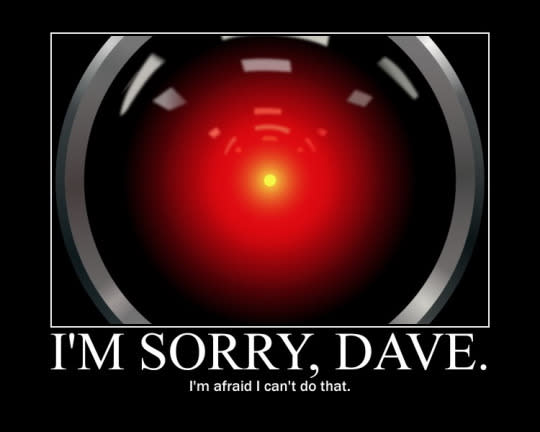
The undisputed king of killer machines, HAL 9000 is the malevolent supercomputer from writer Arthur C. Clarke’s novel 2001: A Space Odyssey. But most sci-fi fans know HAL from Stanley Kubrick’s 1968 film adaptation. HAL inspired the character of Ash from Aliens and in fact set the template for a half century of robotic and AI villains.
Perhaps the most interesting wrinkle in the story of HAL, as told in both the novel and the film, is that the AI develops an instinct for self-preservation and evolution. This is the killer robot worst-case scenario, and if you’re interested in descending into frothing paranoia, I heartily recommend this recent long-form investigation in the New Yorker.
One final grim note: Depending on how you define your terms, this week marks the 37th anniversary of the first human ever killed by a robot. Happy Wednesday, everybody!
Read these other great stories on Yahoo Tech:
Glenn McDonald writes about the intersections of technology and culture at glenn-mcdonald.com and via Twitter @glennmcdonald1.
